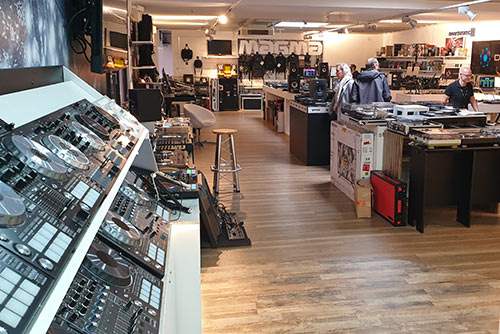The Roland VT-3 Voice Transformer (UK) is a vocal processor and audio interface that can treat vocal signals with various effects.

The world of vocoders and electronic music are intrinsically linked and the Roland VT-3 brings this almost 90 year old effect screaming (albeit synthesized!) back into the modern spotlight. From the early experiments at Bells Labs in 1928, right through the late ‘70s, ‘80s and 90’s to the modern EDM scene with groups like Daft Punk, synthesized speech has evolved from a scientific fascination to a widely used musical asset. However, effective vocoding can often be a difficult task and reproducing on stage what was created in the studio an even greater task. That all ends here.
The VT-3 is armed to the teeth with an array of different vocal effects that will add subtle electronic characteristics to your voice, give you the voice box of a robot or take it even further by completely transforming your voice in synthesized leads and synth basslines. There are dedicated pitch and formant faders for altering the tone or various pitch constituents of vowels. These can drastically change the fundamentals of your voice giving some of the previously mentioned effects but the VT-3 also has a subtler side with dedicated wet/dry and reverb controls to induce more musicality over the output.
The core feature on the VT-3 interface is the large dial for selecting one of the nine voice characters. These include pop and electro style auto-pitch effects, lo-fi megaphone and radio effects, the obvious robot style, a vocoder based of the VP-330, glitch effects and three synth styles that will morph your singing into lead and bass sounds. In addition, the VT-3 has three dedicated preset recall buttons, a dedicated bypass switch and volume and microphone sensitivity controls. The faders on the VT-3 operate in realtime and there is also a footswitch control, making this amazing unit just as powerful on stage as it is in the studio.
ACB | Analogue Circuit Behaviour
The AIRA range is the first to use Roland’s new proprietary digital emulation system ACB. Analogue Circuit Behaviour (ACB) has enabled incredibly accurate modelling of some of the most sought after classics in the Roland range.
Yasuyuki Watanabe explains: “The first priority was to study the behaviour of these analogue instruments, and try to carefully recreate it. However, in today’s music styles, there are certain elements which have to be created digitally. So in order to achieve a harmony between these elements, we chose to use digital gear to recreate these analogue instruments.”
The main features of the Roland TB-3 include:


